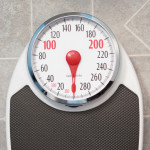Having an undetectable viral load and taking a regimen including a non-nucleoside reverse transcriptase inhibitor (NNRTI) may protect against unhealthy reductions in “good” HDL cholesterol, according to a study published in the July issue of AIDS Patient Care and STDs. Conversely, not being on HIV treatment and having high triglycerides were associated with lower HDL levels, a risk factor for cardiovascular disease (CVD).
Various studies have looked at factors that can affect blood levels of total cholesterol and “bad” LDL cholesterol—both of which can increase the risk of CVD, including heart attacks and strokes—in HIV-positive people. Little research, however, has evaluated factors that can lead to low HDL in people living with HIV.
To explore this further, Enrique Bernal, MD, and his colleagues from the Hospital General Universitario de Elche in Elche, Spain, examined the medical records of 219 of their HIV-positive patients. Most of the patients were male, 72 percent were smokers, and 76 percent were on antiretroviral (ARV) therapy.
Dr. Bernal’s team found that 44 percent of the patients had a low level of “good” HDL cholesterol. In this case, low was defined as less than 40 mg/dL.
Among the factors associated with low HDL were family histories of CVD, older age, high triglycerides and discontinued use of ARV therapy. Conversely, using an NNRTI, particularly Viramune (nevirapine), was associated with higher HDL levels. Likewise, people with undetectable loads had higher HDL levels than people with detectable virus. The authors recommend further studies to explore how HDL levels impact people living with HIV.
Advertisement
Advertisement
Advertisement






Comments
Comments